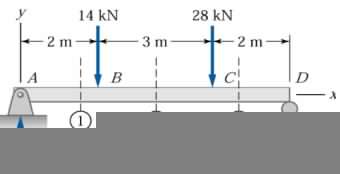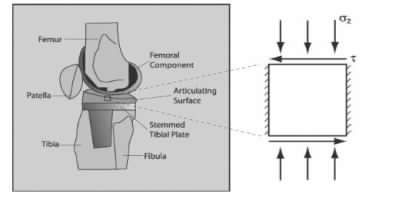Assignment Part 1:
(A) Carbon fibres are considered as a material for composite part in a wind turbine structure.
(i) Calculate the theoretical strength of the carbon fibres by assuming a carbon-carbon bond length of 0.15 nm, a material surface free energy of 50 mJ/m2 and an elastic modulus of 1 TPa.
(ii) Sketch a Lennard-Jones curve for the carbon-carbon bonds in the carbon fibre and show a comparable Lennard-Jones curve for copper fibres where the strength and elastic modulus of the copper is lower than for carbon. Clearly indicate the differences between the two materials.
(iii) Sketch a diagram to show carbon fibre production. Your diagram should clearly indicate the three temperature treatments required in the production and name each of these temperature treatments.
(B) The composite uses the carbon fibres with 50% in a 45? and 50% in a -45? orientation to improve fatigue resistance. An epoxy with an elastic modulus of 1 GPa and a low-grade carbon fibre with an elastic modulus of 200 GPa are used in the composite.
(i) State the Krenchel equation that can be used to predict the elastic modulus of the composite.
(ii) Calculate the orientation factor for the composite.
(iii) Calculate the resultant elastic modulus of the composite assuming the length efficiency factor is 0.8.
(iv) Suggest how the resultant composite elastic modulus would vary compared to your answer in (iii) for fibre orientation approaching Voigt and Reuss conditions.
Assignment Part 2:
The simply supported beam in Fig. T2 carries two concentrated loads.
(a) Derive the expressions for the shear force and the bending moment for each segment of the beam.
(b) Sketch the shear force and bending moment diagrams.

Fig. T2
Assignment Part 3:
The main components of the artificial hip are the femoral stem that is fitted into the bone, the ball attached to the stem and the acetabular cup that is fixed into the pelvis. The property constrains on the materials to be used for these elements are very strict because of chemical and mechanical complexity of the hip joint.
(a) What are the main material requirements for hip implants? Briefly justify each point.
(b) What materials are currently used for the femoral stem and acetabular cup? Discuss their advantages and disadvantages.
(c) How is the implant secured to the bone? Describe the two main strategies and related implication in surgical outcome.
Assignment Part 4:
Consider a polymeric tibial insert that is subjected to a simplified stress state involving a compressive normal stress of 20 MPa and an applied shear stress of 2 MPa as shown in Figure T4. The compressive yield strength for this polymer is 30 MPa and the tensile yield strength is 20 MPa. The Poisson ratio is 0.46 and its elastic modulus is 1 GPa. Calculate:
(a) The effective (von Mises) stress for this implant.
(b) The factor of safety against yield.
